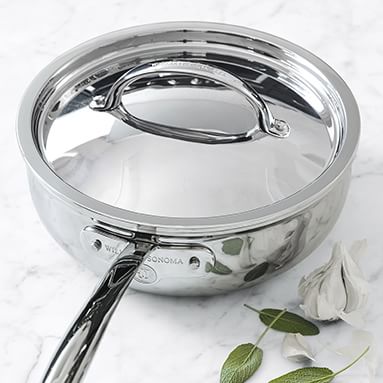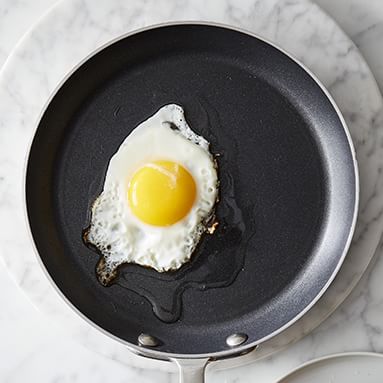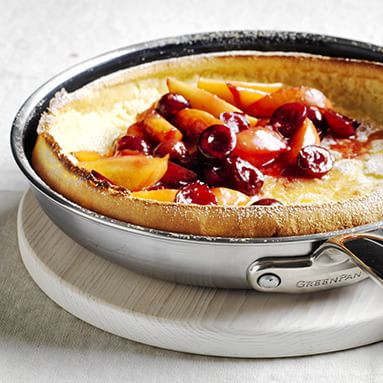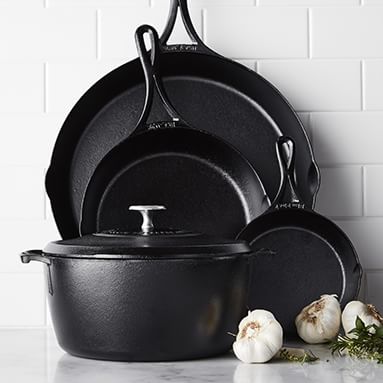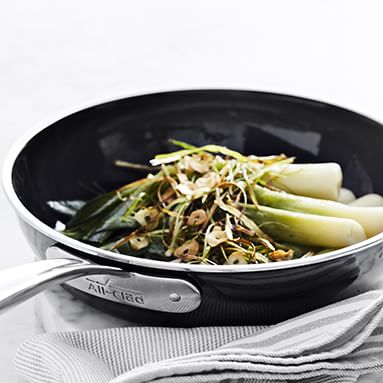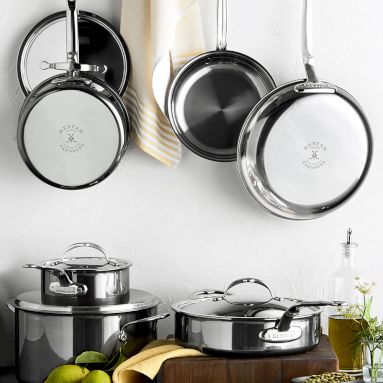Related Categories
Induction Cookware
At Williams-Sonoma, we know that you have your own signature style of cooking. That’s what gets your friends and family so excited whenever you put on your chef’s apron. There are tons of different inspirations that you can draw on, from international cuisine to the meals you remember as a kid, all with a personal twist. Our goal is to provide you with cookware that adapts to you, and not vice-versa. Whether you’re making authentic Mexican enchiladas or Thai stir-fry, certain types of pans and tools make things easier. That goes for your favourite methods of cooking too. Our grill tools are a big help for a backyard barbecue, and creating crunchy pizza with a pizza oven is a big hit with the entire family. What about induction stoves? How does induction cooking work, and what kind of cookware can you use with it? Here’s the 411 on induction cookware.
Induction cooking uses electromagnetic fields to heat up pots and pans. You don’t need to be a scientist or an engineer to use it, though; cooking with induction is easy and safe. In fact, most induction stoves are extremely user friendly, with digital readouts and automatic safeguards to avoid overheating pans. Think of induction cooking as an electric stove’s futuristic cousin, where instead of using a metal coil to heat up pans, the pan itself is what conducts the heat.
What are the advantages of induction cooking? It takes the best parts of electric stove tops and gas cooking and combines them. That doesn’t mean that gas or electric are outmoded, of course. Many chefs have a personal preference for one of them. The important thing is to go with what makes you feel comfortable. Induction stove tops heat up quickly and very precisely. You can turn up or down the heat almost instantly, which is great for thickening sauces or cooking veggies just the way you like them. Induction cooking, unlike gas, can stay at very low temperatures for gentle simmering too.
Another big benefit of induction cooking and induction cookware has to do with safety. Because it uses an electromagnetic field to cook, only pots and pans directly above the coil get hot. The rest of the stove stays completely cool. That helps everyone to avoid accidents and burns, since resting your hand on another part of the stove – even if it’s technically turned on – won’t do anything without a pan above it. That helps moms and dads with small children to rest a lot easier. Induction surfaces are also very energy efficient. Virtually all of the energy used goes to the pan, instead of heating up the surrounding air. Bottom line: less energy, less accidents, easy to keep clean.
Where does induction cookware come in then? Well, in order to work with electromagnetic fields, you need cookware that’s magnetic. Our induction cookware is specifically designed for this kind of stove top, which gives you excellent results whether making breakfast, lunch or a special meal. What kind of materials are magnetic? Most induction cookware is made of stainless-steel or cast iron. It’s not necessary for the entire pan to be made of these metals, though – just the majority. That’s why enameled cast-iron pots work great on induction stoves.
What about copper? Pure copper pans don’t work with induction systems. But if you love copper for its heat-conductivity and temperature control, don’t worry. Many of our induction pans have a copper or aluminum core for even cooking and quick heating. If you’re in the mood for a one-pan meal and quick cleanup afterwards, many of our nonstick cookware pieces are compatible too. They’re a cinch to clean and are safe for your family since they’re PFOA-free.
Looking for a few tips for using your induction cookware? Here are a couple of suggestions that can help. One thing many cooks recommend is double-checking that your pan is centreed on the heating element for even cooking. It’s also good to remember that metallic cooking utensils – since they’re magnetic – can heat up if you leave them on top of an induction burner that’s turned on.

